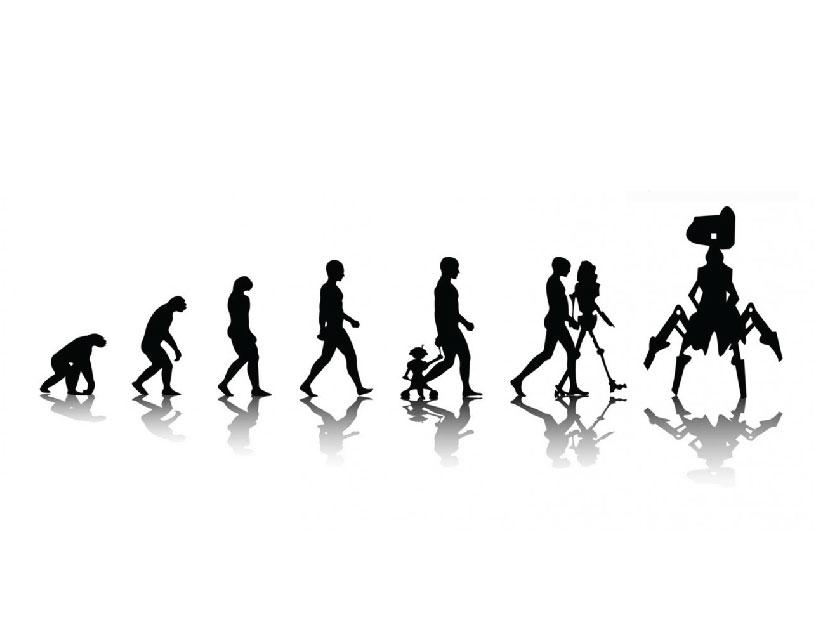The emergence of a new technology is often cited as what drives the disruption of an industry or business. But that’s not true in most cases, according to Harvard Business School professor Thales Teixeira. Instead, startups disrupt established companies by decoupling the customer value chain — picking one aspect of the business and doing it better than the incumbent.
His findings, based on eight years of researching startups, tech companies and incumbents, are explained in his new book, Unlocking the Customer Value Chain: How Decoupling Drives Consumer Disruption. Teixeira joined the Knowledge@Wharton show on SiriusXM to talk about his book. (Listen to the podcast at the top of this page.)
An edited transcript of the conversation follows.
Knowledge@Wharton: Why do we believe that technology has enabled so much disruption in business?
Thales Teixeira: Pure and simple, because it is sexy and interesting to hear about new technologies. The media fuels all of our needs for figuring out what are the new tools and new technologies, and it just creates momentum in the market. The companies are developing these things, so there are a lot of PR agents out there. We do have a few very prototypical examples of actual technologies being game changers. The mobile phone is one of them.
I visited many startups, and I also visited the incumbents that said they were being disrupted by these startups. I started realizing that there are very few technologies that are really game changers and disruptors in that sense. In the vast majority of the cases, these startups have the same technologies as the incumbents that they are fighting. So, this idea that technology is disrupting markets is not really [true in] the majority of the cases.
Knowledge@Wharton: Can you explain this idea of decoupling?
Teixeira: To understand decoupling, you need to understand one of the core concepts we teach our students at Harvard and many other business schools like Wharton. I call it the customer value chain. Basically, it is looking at each of your customers or potential customers and mapping out all of the activities that they need to do in order to acquire products and services.
For example, 20 million people in the U.S. need to take three or more pills per day. They need to go to the doctor, get a prescription, get the prescription filled, get their medication, take it home and sort it out because they might have to take a pill after lunch, another at night, and so on.
These are all activities required for patients to take their meds, and this is the customer value chain. The reason I call it the value chain is because when you look at any customer in any market buying any product, you can classify those activities that the customers have to go through in one of three types.
“Decoupling is looking at one activity in the customer value chain and deciding to do it much better than the incumbent.”
Is it a value creating activity? Taking your pills is actually a value creating activity. Is it a value charging activity, meaning do you have to pay for it? In this case, paying for the medication, paying for the doctor. Those are value charging activities. And last, is it a value eroding activity? For me as a patient, the physical activity of going to the doctor doesn’t create value for me. It’s a necessary evil, so to speak. The activities of having to order or buy or pick up medicine are also value eroding activities. When we look at the customer value chain, these are three types of very distinct activities.
Knowledge@Wharton: You refer to different instances of this decoupling, including how makeup retailer Sephora was affected by Birchbox, an online subscription service for beauty products.
Teixeira: That’s right. Decoupling means a startup looks at this customer value chain and sees all of these activities that are generally provided by one established player. In the beauty industry, the established retailer is Sephora. I have to go to Sephora and sample beauty products because what goes well on my skin might be different from yours. I have to talk to a consultant, choose what to buy, buy it, take it home, replenish it. These are all of the activities in the customer value chain.
What Birchbox and Ipsy and many of these other subscription beauty box startups decided to do was focus only on the first part — the sampling of beauty products. They allow you to subscribe and get samples at home. You can buy it anywhere else — Sephora, Amazon, or on some of their own websites. So, decoupling is looking at one activity in the customer value chain and deciding to do it much better than the incumbent, and that is how these startups are disrupting markets.
Knowledge@Wharton: What is going on now with the traditional retailer?
Teixeira: I visited many retailers — Best Buy, Sephora, even mall operators like Westfield — and talked to them. They would say, we are being disrupted. I would always ask the same question: What is disrupting your business? By and large, I would get answers in one of two camps.
Either startup X is disrupting my business, or a tech company. They would point at some startup or point at technology. In the case of Best Buy, they would say, “Mobile phones are disrupting our business because people are showrooming in our stores.”
If you think that a startup or a technology is disrupting your business, the natural course of action is either to acquire this startup if the price is low, go into a price war, or acquire the technology. But as I have accompanied them doing that, this hasn’t solved their problems. We needed to reassess and figure out what is disrupting their business.
My key finding in the book, after looking at many industries, is it’s the customer who is disrupting these businesses. The changing needs and wants and behaviors of customers are actually the root cause of this huge shift away from large retailers into other startups and other online retailers.
Knowledge@Wharton: Part of that is also the convenience we get from online retailers who make the experience so much easier than it was before.
Teixeira: You are right in one aspect, but there are two other ones. Consumers pay for all of the goods and services with three currencies. They pay with their money, with their time and with their effort. To the extent that a consumer wants to get a better deal, they are just trying to reduce these three costs.
Convenience is an effort cost. Can I make it more convenient for me? In the case of Birchbox, it was definitely convenience. I want to sample these beauty products in the convenience of my home. So, that was the disrupting force. It wasn’t that Birchbox had a website, it wasn’t that Birchbox had the ability to put samples in a box and ship it to your house. This is trivial; all companies can do that. It was actually this reduction in [convenience] cost.
In the case of Pill Pack, which was acquired by Amazon for $1 billion, what consumers wanted was medication that was correctly allocated to them, timely, very quick to be delivered, as well as convenient. That is one aspect. But in other cases, it is also about cheaper prices. I am sure if you’ve used Uber or Lyft, you know that the price is so much cheaper than taking a cab. Obviously, they are subsidizing to some extent, but their convenience and reliability are letting them disrupt the taxi industry.
“These little decisions that we consumers make, multiplied by millions of people … that’s what is disrupting these markets.”
It is not that Uber has a technological ability to summon a car. When I did research and I look back at the early days of Uber, when you wanted to call an Uber, you would text message or call them. At the other side of the line, there was an Uber employee who picked up the phone or looked at the text message and tried to call car operators to send a car your way.
Nothing was as automated as it is today, after they have been funded billions of dollars. Before, it was just this desire of people to not rely on the very bad taxi industry that was available to them. But [Uber] didn’t have any technologies that anybody else couldn’t have access to. All they had was a GPS and a phone.
Knowledge@Wharton: One of the other examples you give is Borders, the old bookstore chain that was popular 15 years ago. What happened?
Teixeira: We all know what happened to these big bookstores. First Borders, now Barnes & Noble is closing doors left and right. They also had websites and e-readers, just like Amazon, yet that didn’t secure their survival. So, it wasn’t Amazon’s technology early on that was disrupting them. … It was Amazon’s ability to transform what we call an ‘experience good,’ which are products that you can only assess the quality after you experience them.
You would buy a book because you would take a look at it, you would read a little bit about it. Amazon transformed that by making people not really needing to touch a book and read it and sit down a little bit just like the bookstores offered us. Now you buy books without experiencing them, per se. You look at the reviews, somebody told you about it, and you go on Amazon and click and buy it.
These are all changing consumer behaviors. When somebody tells you about a book, you go online and buy it on Amazon. When you arrive at an airport, you call an Uber instead of go to the taxi stand. When you go on vacation with your family, you look for Airbnb instead of staying in a hotel. These little decisions that we consumers make, multiplied by millions of people doing it all of the time, that’s what is disrupting these markets. Not the technologies.
Knowledge@Wharton: What are the keys to building a business that would be disruptive?
Teixeira: In 2010, I went to my first startup, which was Facebook, and I saw Mark Zuckerberg and saw the effects of it. I asked him, how are you planning to disrupt the media industry? Then I went to Netflix, Airbnb, Birchbox and other lesser-known startups, and I tried to understand what they were doing. I saw there was a very common pattern regardless of what industry they were in.
I provide this in my book in one of the chapters. I even go to the lengths of saying there is a recipe for disruption, which is a series of ingredients and logical steps that you should do in order to try to disrupt a market. By disrupt a market, I mean in a short period of time try to steal a sizable amount of market share from the established players.
At first, it requires you to map out the customer value chain. Look at your customers or your prospective customers that you would like acquire, and look at all of the activities that they have to do. In the case of buying a television, you need to go to the store, look at the options, choose one, pay for it, get it delivered, installed, and so on.
“Find the activity where consumers are not fully satisfied. That is the weak link in this customer value chain, and that is your beachhead.”
Second, you need to classify these activities into value creating, value charging and value eroding activities. The third step is to find the activity where consumers are not fully satisfied. That is the weak link in this customer value chain, and that is your beachhead. That is the opportunity for you to break away and steal customers.
The key point of decoupling is not to replicate what established players do; it is to find something that consumers are very unsatisfied with. If you offer something better, you will steal away customers. The way that you do that is by reducing one of three costs: reducing monetary, reducing effort and reducing time costs. The way to do that is you use business models and technologies.
Knowledge@Wharton: Do you think the growth of startups will continue as more people understand what it takes to be disruptive?
Teixeira: It is a big puzzle, and it was a big puzzle to me. Big retailers like Best Buy and Sephora, telecom operators like Comcast, auto companies like Ford, industrial companies like GE, have so many resources, billions of dollars, the best people, access to all of the technologies that they can build. How can they be disrupted by a startup? It is just puzzling how a small group of people, and most of them do not even have the industry experience, [can succeed]. Dollar Shave Club was founded by a guy who had no clue about the razor industry, and he built a company that doubled the market share of online razor sales.
The explanations that I found is to focus on one thing and do it much better. One thing, not all of the things that the established player does. Focus on one thing and do it much, much better. These startups have been able to do that.
Knowledge@Wharton: One of the last chapters you have in the book is titled “Spotting the Next Wave of Disruption.” Even if you are spotting that next wave, don’t you have to keep in mind that another wave could be coming after that?
Teixeira: That’s right. I have given so many talks to executives who wanted to understand how to respond to decoupling, after I explained to them how decoupling works. But always at the end of these talks, everybody would ask me, what is next? You get frustrated because you’ve spent so much time working and researching the current wave, yet people are wanting to know what is next.
What I thought about is, let me explain how I came across the concept of decoupling, seeing this wave, because the challenge of spotting what is next is this duality: You think you are seeing something that is really not happening because you are looking so far into the future. Or you are spotting something that everybody else has already seen, so you are not actually finding something new. Everybody is already responding to it, so there is not much benefit to it. It is clear, evident to everybody.
This ability to see something before others is what I thought I could probably help them do. When you understand that customers are the disruptors, you start understanding that when customers disrupt in an industry, they go into the other industries that they are buying products and services from and do the same thing.
What we noticed through the data is people who start buying on Amazon, using an Amazon app, are more likely to sign up for Uber versus those who don’t buy frequently on Amazon. And those who are buying on Amazon and using Uber are more likely to sign up for Airbnb and start using Airbnb. And when they use these three apps, they are even more likely to use Birchbox and Trove and Venmo.
There is this domino effect across industries because these are very different markets. If you are in any one of these markets, you are not seeing this. Why? Because research by IBM showed that between 90% and 97% of the time, executives are spending their time and efforts on their own industry, looking at partnerships in their industry, looking at analysis reports in their industry. You will never see a wave of disruption that blankets multiple markets if you are only spending time in your industry.
The problem is that there are hundreds of industries out there, so in the last chapter of my book, I provide seven industries that you should look at in order to identify new waves of disruption. When I looked at the amount of spending by household in the U.S. in these seven industries, it corresponds to about 94% of incomes. These are industries [that provide products and services around] basically what you eat, how you transport yourself, what you wear, how you educate yourself, how you entertain yourself, how you heal yourself or health care, and how do you live.
This article is taken from Knowledge@Wharton.
Photo by Jimmy Musto on Unsplash.

 4.2
4.2 





















